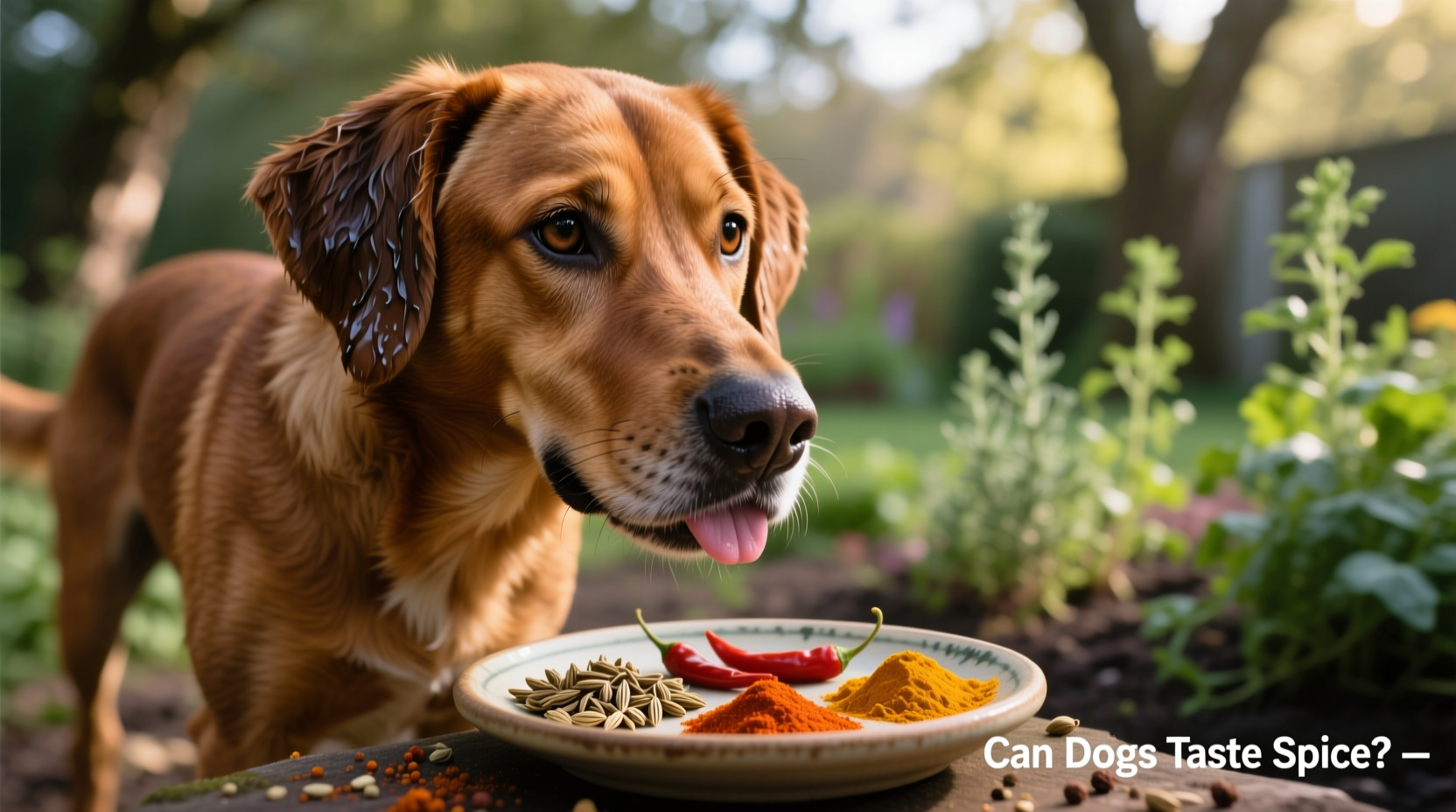No, dogs cannot taste spice the same way humans do. While they possess taste receptors that detect capsaicin (the compound that makes chili peppers hot), their sensitivity is significantly lower than humans'. However, consuming spicy foods can still cause serious digestive discomfort, vomiting, and diarrhea in dogs despite their reduced perception of heat.
The Science Behind Canine Taste Perception
Understanding whether dogs can taste spice requires examining their unique sensory biology. Dogs have approximately 1,700 taste buds compared to humans' 9,000, creating fundamentally different flavor experiences. Their taste receptors evolved primarily to detect meaty, savory flavors essential for their carnivorous ancestry.
Research from the National Institutes of Health reveals that dogs possess TRPV1 receptors (the same receptors that detect capsaicin in humans), but these receptors function differently. While humans experience intense burning sensations from capsaicin, dogs register only mild irritation.
| Sensory Aspect | Dogs | Humans |
|---|---|---|
| Taste Buds | ~1,700 | ~9,000 |
| Sweet Detection | Limited | Strong |
| Bitter Detection | Moderate | Strong |
| Spice (Capsaicin) Sensitivity | Low | High |
Why Spicy Foods Still Harm Dogs Despite Reduced Sensitivity
Many pet owners mistakenly believe that because dogs don't taste spice intensely, spicy foods are safe. The American Veterinary Medical Association clarifies that while capsaicin isn't toxic to dogs, spicy foods trigger physiological reactions that cause significant discomfort.
When dogs consume spicy foods, they commonly experience:
- Excessive drooling and pawing at their mouth
- Upset stomach and gastrointestinal inflammation
- Vomiting within 30-60 minutes of consumption
- Diarrhea that may last 24-48 hours
- Increased thirst leading to potential bloat

Common Spicy Food Scenarios and Their Risks
Understanding the context boundaries of spice exposure helps pet owners assess real-world risks. Not all spices affect dogs equally, and certain scenarios present higher dangers than others.
High-Risk Situations:
- Accidental consumption of hot sauce or chili peppers
- Eating leftovers containing significant amounts of black/red pepper
- Consuming human foods prepared with spicy rubs or marinades
Lower-Risk Situations:
- Small amounts of food with mild spices like paprika
- Occasional exposure to dishes containing trace amounts of cumin or coriander
- Foods with minimal spice content that dogs might scavenge
Immediate Actions When Your Dog Eats Spicy Food
If your dog consumes spicy food, follow these veterinarian-recommended steps:
- Remain calm - Your anxiety can increase your dog's stress
- Offer cool water - Helps soothe irritated tissues (avoid milk as it can worsen digestive issues)
- Provide plain yogurt - The probiotics can help restore gut balance
- Monitor closely - Watch for persistent vomiting, diarrhea, or lethargy
- Contact your vet if symptoms last more than 12 hours or if your dog shows signs of distress
The ASPCA Animal Poison Control Center emphasizes that while most spicy food incidents resolve within 24 hours, dogs with pre-existing gastrointestinal conditions face higher risks of complications.
Preventing Future Spicy Food Incidents
Proactive prevention protects your dog from unnecessary discomfort. Implement these practical strategies:
- Establish clear boundaries for餐桌 etiquette - train dogs to stay away from dining areas during meals
- Use covered trash cans to prevent scavenging of spicy food scraps
- Create dog-safe alternatives to human foods containing similar textures without harmful spices
- Educate family members and guests about the dangers of sharing spicy foods with dogs
- Store hot sauces and spicy condiments securely out of reach
Safe Flavor Alternatives for Dogs
While avoiding human spices, you can enhance your dog's food with these safe flavor boosters:
- Parsley (fresh, in small amounts) - freshens breath and provides nutrients
- Plain pumpkin puree - aids digestion and adds natural sweetness
- Low-sodium chicken or beef broth - enhances palatability safely
- Blueberries or banana slices - provide natural sweetness and antioxidants
Remember that dogs' primary nutritional needs differ significantly from humans. The FDA Center for Veterinary Medicine confirms that dogs thrive on balanced commercial diets formulated specifically for their biological requirements, making additional flavoring unnecessary for most healthy dogs.











 浙公网安备
33010002000092号
浙公网安备
33010002000092号 浙B2-20120091-4
浙B2-20120091-4